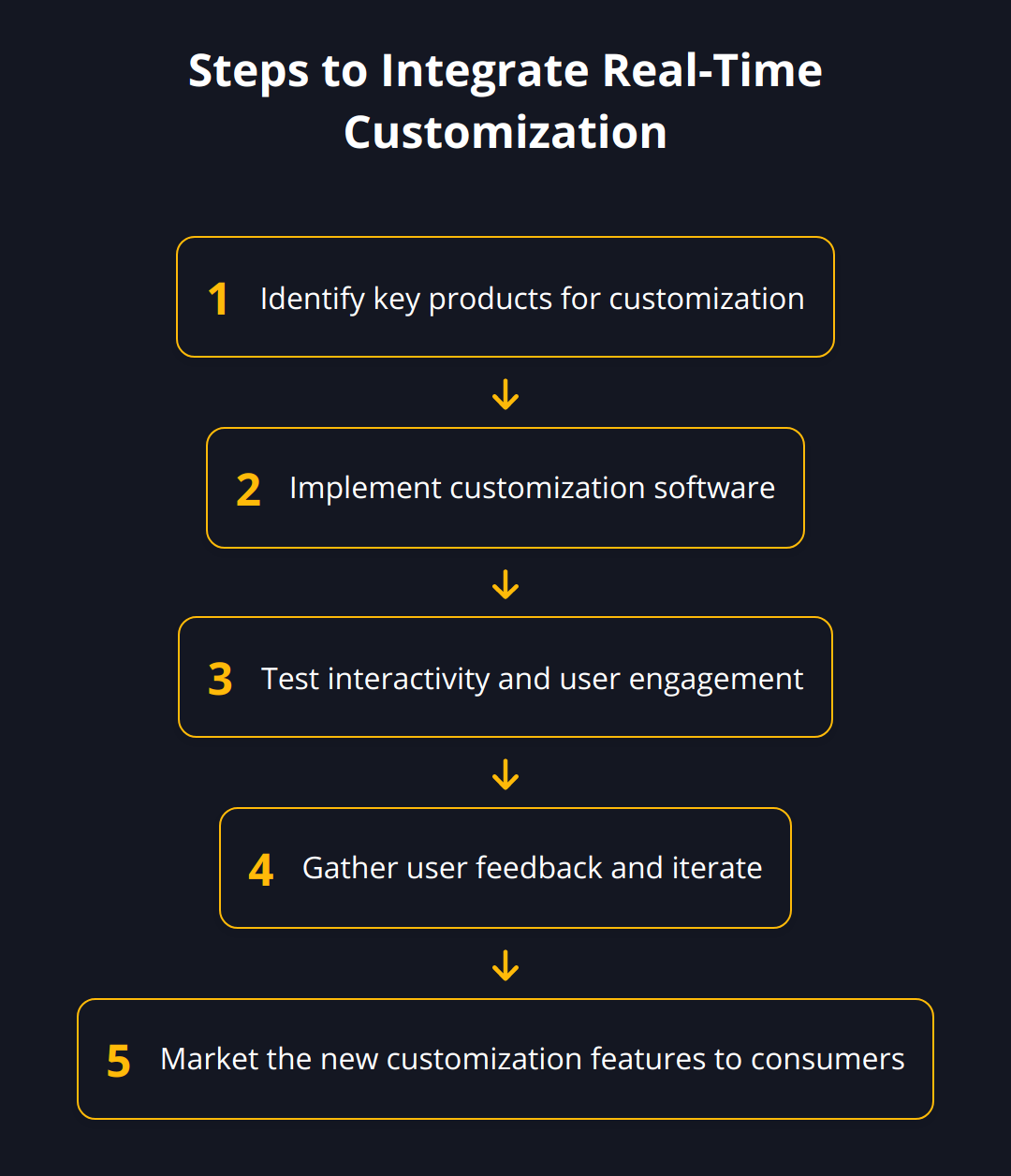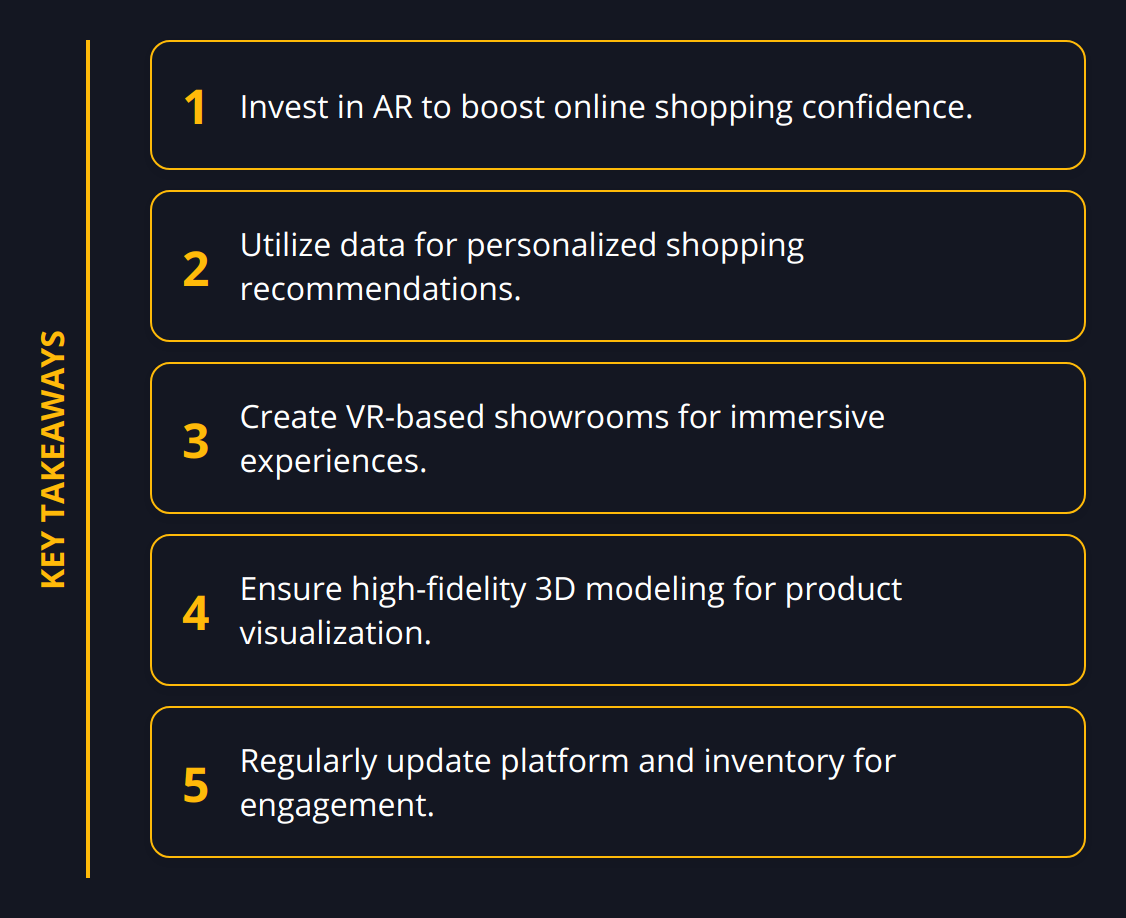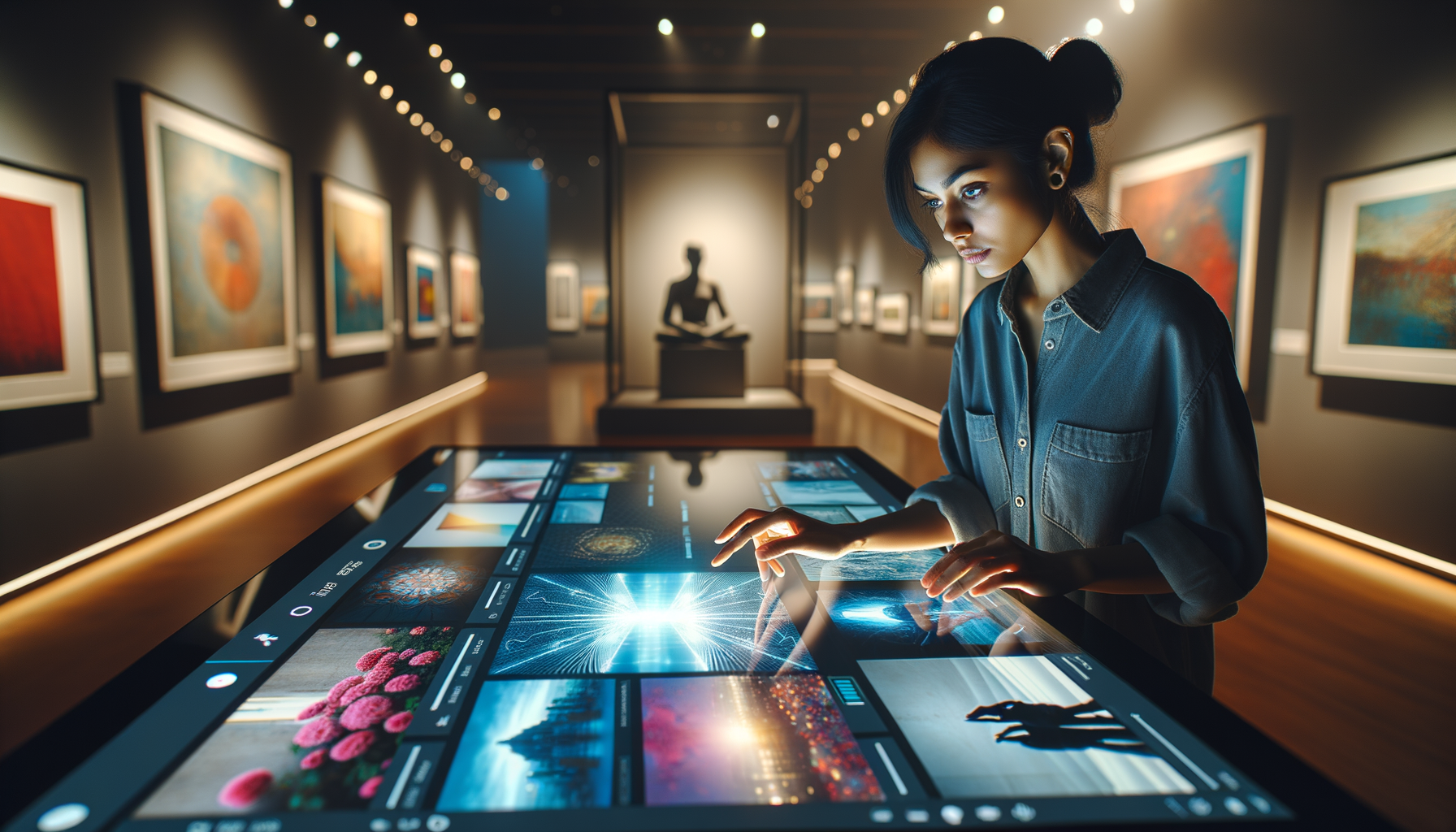The retail world is witnessing a significant transformation, thanks to the advent of virtual showroom technology. We at Newroom Connect have observed how this innovation is reshaping the industry, altering the way consumers interact with products and brands.
Integrating cutting-edge technologies like augmented reality (AR) and 3D modeling, virtual showrooms are not just a fleeting trend but a leap forward in retail engagement and experience.
Join us as we explore the multi-faceted impacts of virtual showrooms on consumer behavior, the benefits for retailers, and the technologies that make it all possible, along with practical advice for navigating the challenges inherent to these digital landscapes.
How Does AR Boost Shopper Confidence?
The retail environment is evolving rapidly, and with it, customer expectations are reaching new heights. Today’s consumers are not just interested in what they’re buying, but also in how they’re buying it. Virtual showrooms that employ augmented reality (AR) are proving to be a game changer, particularly in enhancing customer confidence.
Businesses that integrate AR into their virtual showrooms enable customers to view products in their actual environment before making a purchase. This significantly reduces the guesswork involved in online shopping, and studies reveal it’s effective – a staggering 80% of consumers feel more confident about their purchases with the help of AR technology. Retailers offering AR experiences have seen conversion rates catapult by up to 94%. These figures aren’t just impressive, they’re transformative.
But why does AR have such a profound impact on consumer behavior? It boils down to visualization. Customers can interact with a product, customize it, and see how it fits within their own space. The benefits are especially pronounced in the home decor and fashion sectors. For instance, having the ability to visualize a new sofa in your living room or to see how a dress looks from all angles significantly minimizes the risk of returns and post-purchase dissatisfaction.

Actionables for Retailers:
-
Invest in AR technology to provide interactive product demonstrations.
-
Highlight AR features in marketing campaigns to attract and reassure customers.
-
Collect data on customer interactions with AR to refine and improve the experience.
Personalizing the Shopping Experience
In the digital era, personalization is not just preferred; it’s expected. This puts virtual showrooms in the spotlight, as they have the unique ability to tailor the shopping experience to each individual consumer.
By utilizing data analytics and machine learning, virtual showrooms can suggest products aligning with a shopper’s preference, based on their browsing history and behavior. This creates a personalized and memorable experience that resonates on a deeper level with customers.
An impressive example of personalization through virtual showrooms can be found in the fashion industry, where brands are using these tools to offer virtual try-on experiences. Shoppers can see how clothes fit without stepping foot in a store, thus revolutionizing the traditional shopping experience and fostering brand loyalty.

And the numbers speak for themselves. Retailers with a strong omnichannel customer engagement strategy retain on average 89% of their customers. In comparison, brands with weak engagement retain only 33%.
Retailer Tips:
-
Utilize customer data to recommend personalized product options.
-
Design an interface that memorably showcases personalized content.
-
Engage customers with follow-up communication based on their virtual showroom activity.
The Online Shopping Journey Revolution
Gone are the days when physical storefronts were the starting point of a shopping journey. Now, a staggering 63% of shopping trips begin online, signifying a paradigm shift in consumer behavior. Shoppers are doing their research, comparing prices, and seeking out the best options from the comfort of their screens.
Virtual showrooms are at the forefront of this revolution, offering an unlimited array of products that can be browsed without the limitations of shelf space or store hours. These digital spaces are available round-the-clock and from any location, giving customers unparalleled access and flexibility.
For many, the convenience of accessing a complete product catalog without the limitations of geographic and time constraints makes virtual showrooms the preferred starting point. By effectively leveraging online platforms, businesses can drive foot traffic to brick-and-mortar stores while enhancing the customer’s pre-visit experience.
It’s a compelling argument for retailers to develop a robust online presence as part of their core strategy. In doing so, they not only meet but also exceed customer expectations, fostering loyalty and driving sales.
Key Takeaways:
-
Optimize your virtual showroom for easy navigation and product discoverability.
-
Ensure your online experience is seamless, mirroring the quality and service of in-store.
-
Consider offering exclusive online previews of new products to entice and engage customers.
In summary, virtual showrooms equipped with AR technology, personalized experiences, and the ability to cater to online-first shopping journeys are not just the future of retail – they are rapidly defining its present.
Streamlining Retail with Virtual Showrooms
Virtual showrooms are gateways to a new retail dimension, one where boundaries are dissolved and opportunities for growth abound. Retailers adopting this forward-thinking model are discovering the competitive advantages it brings to their businesses. Here’s why embracing virtual showroom technology is a decisive move for retailers today.
Boundless Display Potential
Imagine the possibilities when limitations on physical space evaporate. A virtual showroom is a boundless space where retailers can showcase not just a selection, but their entire product range. The spatial restrictions that brick-and-mortar stores confront are simply non-existent here. This means customers can explore your complete portfolio without having to navigate crowded aisles or dealing with out-of-stock frustration.
Actionables:
-
Curate your entire inventory in a virtual showroom to maximize customer choice.
-
Keep digital showroom content fresh and fully stocked to reflect inventory changes.

Conversion Uptick with Immersive Engagement
The immersive nature of virtual showrooms means that customers are not just browsing; they’re engaging with products in a way that’s almost tangible. Retailers report higher conversion rates when customers can virtually touch, feel, and interact with their products. Demonstrating how a product functions or how it might look in different environments can entice and persuade customers more effectively than static images ever could.
Key Statistics:
-
Retailers report up to double-digit growth in conversion rates post-adoption of virtual showrooms.
-
Products displayed interactively boast higher chances of customer engagement and sales.
Building Brand and Customer Bonds
It’s not just about the immediate sale. Virtual showrooms have a unique capability to enhance brand recognition and foster customer loyalty. They deliver memorable experiences that leave a lasting impression on shoppers. Consistently positive online experiences resonate with customers, cultivating a loyal customer base willing to return time and again.
Tips:
-
Use your virtual showcase as a storytelling platform to strengthen brand identity.
-
Create loyalty programs that integrate with customers’ online activities and preferences.

Virtual showrooms are not the storefronts of the future; they are the drivers of today’s retail success. As we navigate deeper into the digital era, retailers must adapt to stay relevant. Those who do not only stay ahead of the curve but also set the benchmark for an industry increasingly moving online. It’s clear, integrating a virtual showroom is more than just an innovation—it’s an essential retail strategy.
For insights on creating a compelling virtual exhibition that can impress and engage your audience, consider exploring virtual exhibition benefits and pro tips.
Harnessing Interactive Tech for Retail
The transformative power of technology in reshaping retail landscapes is undeniable. It’s essential to grasp the most effective tech tools that can enhance the virtual showroom experience for both consumers and retailers. Here’s a closer look at the technological marvels that are pivotal in crafting state-of-the-art virtual showrooms.
3D Modeling Advancements
Striking visuals are the cornerstone of any engaging online experience. The rich detail and realism provided by 3D modeling are unparalleled. For retailers, the adoption of high-fidelity 3D models is a must. These models help customers visualize products more vividly than flat images ever could. In the context of buying decisions, the power of 3D visualization cannot be overstated.
Retailers looking to invest in 3D technology should seek platforms offering high-resolution modeling and compatibility across devices. This not only boosts the aesthetic appeal of your products but also enhances the user experience. Keeping in mind that a visually appealing virtual showroom can lead to a 40% increase in time spent on your site, the investment in quality 3D modeling is well justified.
Actionables:
-
Opt for premium 3D modeling services to ensure product visuals are captivating.
-
Regularly update models to align with product updates and new releases.
Blending VR with the Metaverse
Virtual Reality (VR) and the Metaverse are next-gen tools that can transport customers into fully immersive virtual worlds. This isn’t just about seeing a product; it’s about experiencing it in a hyper-realistic setting. Businesses that merge VR with the Metaverse provide customers with an escape into a world where they can interact with products as if they were in a physical store.
With VR headset sales expected to reach over 34 million units by 2023, tapping into this market is a logical step for retailers. By creating an engaging Metaverse experience, retailers can capture the attention of techno-savvy consumers and offer an unmatched level of interaction that keeps them coming back.
Recommendations:
-
Create VR-based showrooms that customers can navigate using VR headsets.
-
Partner with technology providers to build a Metaverse presence that reflects your brand identity.
Real-Time Interactivity and Customization
The quintessence of a superior virtual showroom lies in its ability to offer real-time interactivity and product customization. Customers enjoy experimenting with different options, colors, and features; being able to do this in real-time significantly impacts their purchase decisions.
The integration of product configuration tools can lead to a direct increase in customer satisfaction. Not to mention, real-time customization options can simplify the decision-making process. With over 50% of online shoppers expressing a preference for retailers that offer customization, integrating these tools is a strategic necessity.

Best Practices:
-
Implement tools that allow for easy customization of products within the virtual showroom.
-
Guarantee high performance and low latency to deliver a smooth real-time experience.
By harnessing these technological advancements, retailers can position themselves at the forefront of the ecommerce revolution. Providing an interactive, engaging, and personalized shopping experience is crucial in today’s competitive market. With careful attention to technology implementation and a focus on customer satisfaction, virtual showrooms will continue to set the bar for retail excellence.
Looking to understand the benefits and complexities of creating a digital twin of your products for a virtual showroom? Check out our insights on digital twin marketing.
Navigating Virtual Showroom Challenges
Deploying virtual showrooms can dramatically reshape a retailer’s connection with customers. Still, it introduces a series of challenges that require smart and effective solutions. Understanding these challenges is the first step to ensuring virtual showrooms are accessible, accurate, and engaging.
User-Friendly Interfaces for All
One obstacle is the potential learning curve as customers adapt to new technology. Consumers vary in tech-savitude, and virtual showrooms must cater to all levels of digital literacy. Solutions here hinge on user-friendly design. Simplifying navigation with intuitive controls and clear guidance can help users feel comfortable and confident. For newcomers, offering easy-to-follow tutorials or a help section can make a vast difference. Moreover, integrating familiar layout cues from common platforms can reduce the feeling of foreignness in the digital environment.
Key Actionables:
-
Integrate clear, succinct tutorials within the platform.
-
Use familiar design elements to aid user navigation.
-
Provide readily available support channels to assist users in real-time.
Precision and Clarity in Product Portrayal
Furthermore, the success of a virtual showroom relies on displaying products with high fidelity. Detail, color accuracy, and resolution are paramount in preventing customer disappointment upon receiving the physical product. It is imperative to utilize high-quality imaging techniques and constantly verify that the digital representations are true to life. Collaborate closely with photographers and 3D modelers who grasp the critical nature of accuracy in e-commerce.
Practical Tips:
-
Ensure all visuals are of high resolution and accurate color representation.
-
Conduct routine checks for fidelity between digital and physical products.
-
Offer multiple views and zoom options for a thorough product examination.
Keeping Your Virtual Showroom in Top Shape
Finally, maintaining the showroom is vital for optimal performance. An outdated or poorly functioning virtual space can deter even the most interested customers. It’s essential to maintain the backend tech to keep loading times snappy and the user experience smooth. Retailers should stay adept at resolving bugs swiftly and keeping the showroom’s content fresh and aligned with their inventory.
Best Practices:
-
Regularly update the platform to incorporate the latest user interface improvements.
-
Monitor user sessions to identify and troubleshoot performance bottlenecks.
-
Stay synced with inventory to ensure all showcased products are available.
In essence, the immersion of a virtual showroom should be met with an equally robust support system that fosters seamless user adoption, presents products with lifelike precision, and maintains an environment conducive to frequent revisits. For a deeper understanding of how to engage and sustain customer interest, take a look at virtual trade fair marketing strategies.
Retailers can effectively conquer challenges around new user learning, product representation, and showroom maintenance, ensuring their digital spaces are powerful extensions of their brand and key to achieving customer satisfaction and increased sales.
Final Thoughts
The era of virtual retail showcases has arrived, heralding a wealth of benefits and a notable impact on consumer shopping behavior. At Newroom Connect, we’ve highlighted how augmented reality and 3D modeling technologies are revolutionizing the retail landscape, catalyzing increased consumer confidence and fostering a more personalized shopping experience.

The influence of virtual showrooms is evident in the rise of conversion rates and the depth of customer relationships with brands. These innovative platforms offer boundless display potential and unlock immersive engagement opportunities that brick-and-mortar stores alone simply cannot match.
As we look to the future, the trajectory for growth and innovation in virtual technologies remains robust. Retailers have the thrilling opportunity to not just witness but actively participate in this evolution. It’s an invitation to embrace virtual showroom solutions and position your brand at the forefront of retail innovation.
Businesses venturing into this digital realm can source inspiration, tools, and expertise from platforms like Newroom Connect, where crafting immersive virtual experiences like trade fairs, showrooms, and e-learning platforms is our specialty.
The advantages of venturing into virtual showrooms include:
-
Heightened shopping experiences with interactive product simulations
-
More informed purchase decisions, dramatically lowering return rates
-
Building stronger brand identity through memorable customer experiences
For retailers who haven’t yet explored the potential of virtual showrooms, there’s no better time to start. Advancements in interactive technology are not slowing down, and customer expectations are only increasing. Being adaptable and forward-thinking will no longer be merely advantageous; it will be imperative.
We encourage retailers to explore the potential of virtual showrooms by visiting trade fair solutions to learn how such experiences can be implemented effectively. Stay ahead, stay innovative, and redefine shopping with virtual showroom technology.


